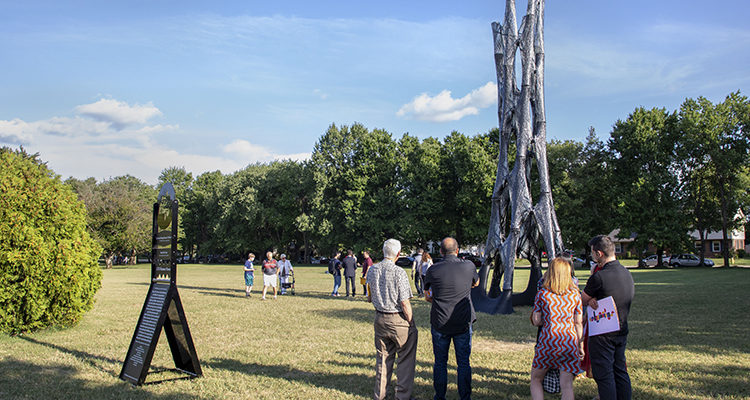After two to five hours of winding, the completed parts were left on the frame to cure at room temperature overnight. They were then moved on their frames into a homemade post-curing chamber for 90 minutes at 90 C. The team built two frames so that while one part was curing, another could be winding.
The tower was built with continuous glass fibers from Owens Corning, continuous carbon fiber filament from SGL Carbon and 114 pounds of carbon fiber tow donated by Teijin. The team selected Hexion EPON™ 863 with an EPIKURE™ 3230 curing agent because of its long pot life. “We wanted to make sure that we had a lot of flexibility in terms of how long we could take to wind each component before we had to worry about the epoxy starting to cure,” says Stiles, who led the project’s materials team.
The filament tower’s three bases were 3D-printed from chopped carbon fiber reinforced acrylonitrile butadiene styrene (ABS) in the Department of Energy’s Manufacturing Demonstration Facility at Oak Ridge National Research Laboratory (ONRL) in Oak Ridge, Tenn. Each base, which measured between seven to eight feet long and up to four feet in height, took approximately eight hours to print with ONRL’s Cincinnati BAAM (Big Area Additive Manufacturing) machine.
The tower was hand-assembled on site at Exhibit Columbus in August 2019 for the four month show. To simplify assembly, every tubular tower component was built with 10-inch diameter ends. To protect the continuous fibers, the end openings were affixed to each other by passing a steel screw through a small aluminum sleeve that covered each bolt during winding and became embedded in the part.
Prado says that the additive manufacturing technology is very efficient because it uses far less material than traditional methods. And, as demonstrated with the UTK tower, the coreless winding technique can be used to create one-off geometries. “I think developing this coreless winding system is super important for using these composites in architectural applications so that we have the adaptability to create a wide variety of geometries not constrained by serialized production,” he says.
Prado says initial applications could include electrical towers, wind turbine towers, facades, roofs and cantilevered structures. In the future, he envisions coreless wound composite load-bearing structures, such as stairs, bridges and even high-rise buildings. He concludes, “Developing these coreless winding scenarios really frees the architect to use these materials in more performative ways architecturally.”


